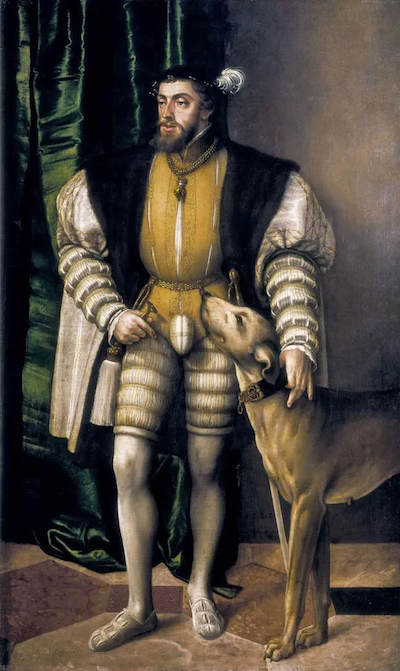Health problems of world leaders have influenced many events. In one man's case, a medical problem probably changed the history of the world and affected the lives of millions of people.
 Charles V had the titles of Holy Roman Emperor, King of Aragon, Castile, Naples, and Sicily, and ruler of the Burgundian territories. In Spain he ruled officially as Carlos I, though he is often referred to as Carlos V. He commanded an empire that stretched across much of Europe and included Spanish America. Conquistadores Hernán Cortés, Francisco Pizarro, and others conquered the Aztec and Inca empires and claimed vast new lands in the name of Charles V.
Charles V had the titles of Holy Roman Emperor, King of Aragon, Castile, Naples, and Sicily, and ruler of the Burgundian territories. In Spain he ruled officially as Carlos I, though he is often referred to as Carlos V. He commanded an empire that stretched across much of Europe and included Spanish America. Conquistadores Hernán Cortés, Francisco Pizarro, and others conquered the Aztec and Inca empires and claimed vast new lands in the name of Charles V.
Unlike many kings of his time, Charles V was an educated man and spoke several languages. It was said that he spoke "Spanish to God, Italian to women, French to men, and German to his horse". He was also an expert military strategist.
Doctors diagnosed Charles with gout in early adulthood. However, modern-day medical experts have often wondered if the diagnosis was correct. The causes of gout were mostly unknown in the sixteenth century.
In 1552, Charles V planned to lead his armies in battle in an attempt to recapture the French city of Metz. However, the pain of a gout attack left him barely able to walk and unable to ride a horse to lead his armies into battle. In 1556, Charles abdicated his various titles, giving his personal empire to his son, Philip II of Spain, and the Holy Empire to his brother, Ferdinand. Charles retired to a monastery and spent the next two years in severe pain. He died in 1558, probably of malaria. What had been his empire fell apart soon after. Twenty-six years later, his remains were transferred to the Royal Monastery of San Lorenzo de El Escorial, outside Madrid.
Historians have attributed most of Charles V's problems to the pain he suffered, ever increasing as he grew older and older. Had he not been in pain, Charles' superior army probably would have defeated the French and added still more land to his empire. "His physical suffering influenced decisions that affected the future of many countries," said Dr. Pedro Luis Fernandez, a pathologist at the University of Barcelona.
Sometime between his death and the later transfer of his body to the Monastery of San Lorenzo de El Escorial, the fingertip of Charles' little finger was separated from the rest of his body. The reason for the separation and its location for many years after is unknown. However, at some point the fingertip was returned to the monastery, where it has since been kept in a red velvet box.
Dr. Fernandez and other medical researchers were given the opportunity to perform laboratory tests on a mummified piece of Charles V's little finger. The analysis revealed deposits of needle-shaped crystals of uric acid that had eroded tissue and bone – a sure sign of gout. Such crystals are caused by a buildup of uric acid and result in pain and swelling of the joints, often the big toe.
Gout has long been associated with rich diets and alcohol. According to historians, Charles V was famous for his big appetite, especially for meat, and he drank large amounts of beer and wine. Charles probably never knew how much his diet contributed to the pain.